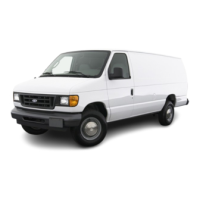
Do you have a question about the Ford 2004 Econoline and is the answer not in the manual?
| Brand | Ford |
|---|---|
| Model | 2004 Econoline |
| Category | Automobile |
| Language | English |
Warning about potential health risks from vehicle chemicals.
Ford's welcome message to the new owner.
Guidelines for safe vehicle operation and environmental care.
Information on warranty coverage and data recording systems.
Specific safety warnings and notices for different vehicle types.
Explanation of common vehicle symbols and their meanings.
Alerts and indicators for vehicle systems and potential issues.
Displays for vehicle speed, engine coolant, and fuel levels.
Mileage tracking and readings for battery voltage and oil pressure.
Controls and functions for the AM/FM radio system.
How to use the cassette player functions.
Operation of radio and single CD player functions.
Features and controls for the six-disc CD changer system.
Operation and quick start guide for the rear seat entertainment.
Managing rear seat entertainment and parental control features.
Controls for the heater-only climate system.
Operation of manual climate control systems.
Controls for the rear climate control fan speed.
How to operate headlights, DRLs, and battery saver.
Using high beams, passing lights, and instrument panel dimmer.
Steps for adjusting the aim of vehicle headlamps.
Operation of turn signals and various interior lights.
Information on exterior bulbs and their replacement.
Controls for windshield wipers and washer fluid.
Adjusting steering wheel and features in the overhead console.
Information and operation of the overhead console display.
Guidelines for using cell phones and power outlets.
Operation of power windows and adjustment of side mirrors.
How to set, increase, decrease, and turn off speed control.
Operation of vehicle keys and power door lock system.
Unlocking and locking vehicle doors using the remote.
Activating the panic alarm and replacing the remote battery.
Procedure for reprogramming or adding remote transmitters.
How interior lights activate with the remote entry system.
Adjusting front seats, lumbar support, and power seat functions.
Procedures for removing and installing rear seats.
General safety guidelines for using seat belts and restraints.
How lap and shoulder belts work, including locking modes.
Indicators and reminders for seat belt usage.
How to enable or disable the BeltMinder system.
Information and precautions regarding the airbag system.
Critical safety information about children and airbags.
Guidelines for using child safety seats and booster seats.
Procedures for installing child seats with various restraints.
Ignition positions and procedures for starting the engine.
Warnings related to driving conditions and starting the engine.
Information on brakes, ABS, and warning lights.
Operation of parking brake and steering system maintenance.
Factors affecting vehicle stability and handling.
How the automatic transmission works, including brake-shift interlock.
Explanation of P, R, N, D, and 2 gearshift positions.
R, N, Overdrive, and Drive without Overdrive positions.
Using lower gears for engine braking and traction.
Guidelines for driving in water and handling emergencies.
How to properly load the vehicle and understand weight ratings.
Guidelines and weight limits for towing trailers.
Ford's roadside assistance program and how to use it.
Operation of hazard lights and reset procedure for fuel pump switch.
Identification and color coding of fuses and relays.
Diagram and description of the fuse panel layout.
Information on high-current fuses in the power distribution box.
Location and identification of relay modules.
Procedure for changing a flat tire.
Guidelines for using a spare tire different from the regular ones.
Procedures for removing and storing the spare tire.
Proper torque values for wheel lug nuts.
Step-by-step guide for jump-starting a dead battery.
Proper methods for towing a vehicle with a wrecker.
Information on obtaining warranty service and dealer support.
Details on extended warranty and warranty dispute resolution.
How the dispute board reviews cases and its member composition.
Information on the CAMVAP program for Canadian customers.
Support for customers traveling internationally.
How to order manuals and publications.
Procedure for reporting vehicle safety defects to NHTSA.
Guidelines for cleaning and waxing the vehicle's exterior.
Addressing paint chips and cleaning aluminum wheels.
Cleaning exterior plastic, glass, and wiper blades.
Cleaning dashboard, interior trim, and fabric surfaces.
Caring for leather seats and maintaining the vehicle's underbody.
General service advice and safety precautions for maintenance.
Procedure for opening the vehicle's hood.
Identifying key components within the engine bay.
Checking and adding washer fluid and engine oil.
Specifications for engine oil and filter types.
Details about the vehicle's battery and its care.
How to check and add engine coolant, and its importance.
Understanding and operating the vehicle in fail-safe cooling mode.
Precautions and guidelines for handling automotive fuels.
Advice on choosing the right fuel and octane rating.
Information on fuel filter replacement and improving fuel economy.
Procedures for refueling and measuring fuel efficiency.
Habits and driving techniques to improve fuel economy.
Information on emission controls and EPA fuel economy labels.
Understanding vehicle diagnostics and emissions testing readiness.
How to check and add power steering fluid.
Procedures for checking automatic transmission fluid levels.
How to add or remove transmission fluid.
Replacing transmission filter and maintaining air filter.
Understanding the U.S. Uniform Tire Quality Grading system.
Explanations of tire grading factors.
Definitions of common tire terms and labels.
Details about "P" type tire identification on the sidewall.
Details about "T" type tires and their speed ratings.
Proper tire care and inflation procedures.
Importance of alignment and tire rotation for wear.
How to inspect tires for wear and damage.
Guidelines for replacing tires and safe driving practices.
List of Motorcraft part numbers for various components.
Capacities for brake fluid, engine oil, and coolant.
Specifications for various lubricants used in the vehicle.
More lubricant specifications for various vehicle parts.
Specifications for engine cubic inches, fuel, firing order, and compression.
Exterior dimensions for van and wagon models.
Dimensions for cutaway and stripped chassis models.
Location of the VIN and certification labels.
Codes for identifying transmission types.
Overview of genuine Ford accessories and their warranty coverage.
Categorized list of available Ford accessories for the vehicle.
Information on adding accessories and FCC regulations.
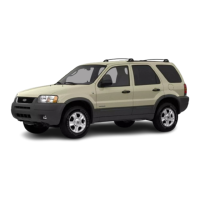
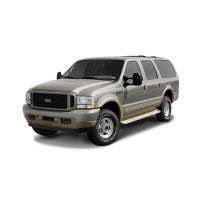
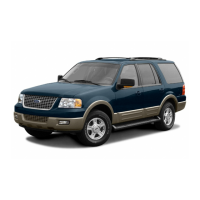
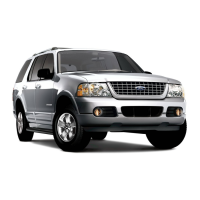
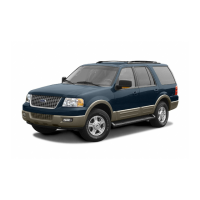
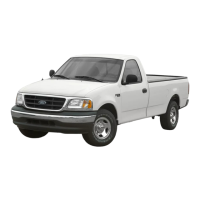
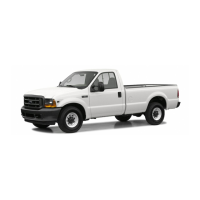
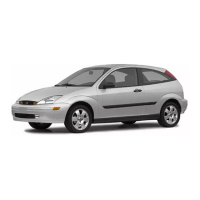
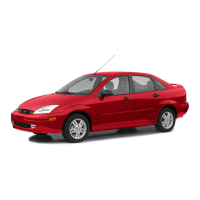
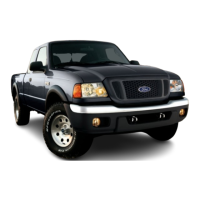
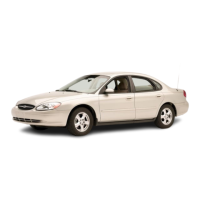
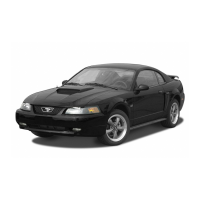
